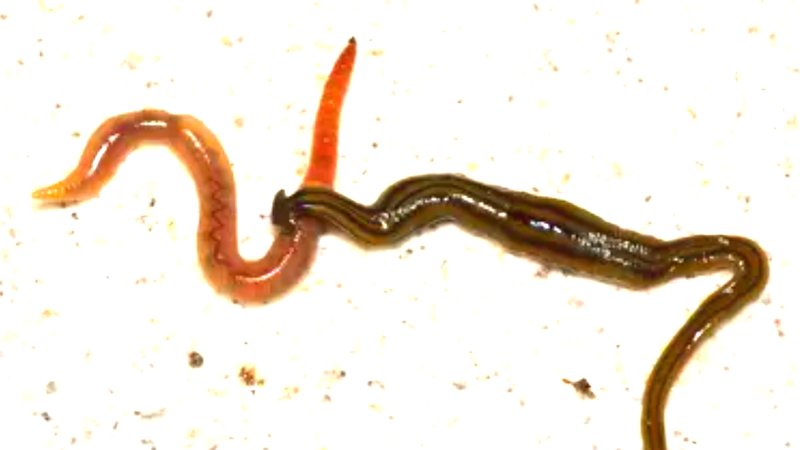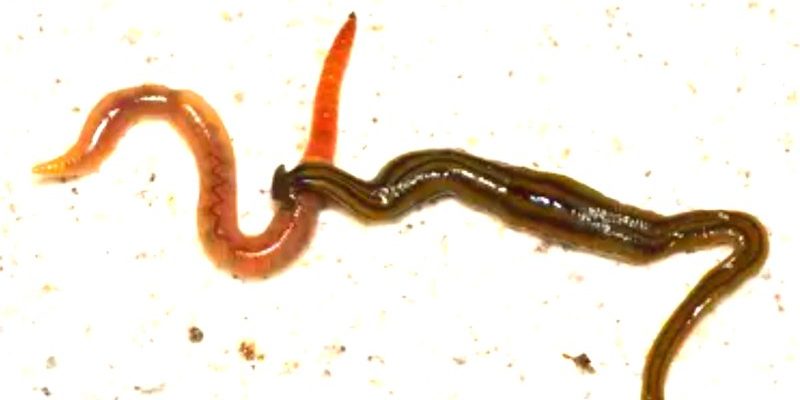
Honestly, hammerhead worms are fascinating yet concerning. They’re predatory worms, meaning they hunt other smaller organisms. You might find them creeping around in your garden or in damp soil. And while they’re not typically harmful to humans, the real question is: what about our furry friends and the wildlife around us?
Let me explain what a hammerhead worm is, why it’s essential to know about its toxic nature, and how it might affect pets or wildlife. This way, you can keep your eyes peeled and your pets safe.
What Are Hammerhead Worms?
Hammerhead worms, scientifically known as **Bipalium**, belong to a group called flatworms. Unlike the common earthworm, these worms have a unique, flat body that can grow quite large, with some species reaching lengths of over a foot! Their distinctive hammer-like shape at the head isn’t just for show; it helps them hunt their prey.
These worms are typically found in warm, humid environments. If you’re in an area with tropical or subtropical conditions, you might run into them more often. They thrive in places like gardens, lawns, and even in houseplants if the conditions are right. Because they’re nocturnal, you might only notice them when the sun goes down.
What’s really interesting is that these creatures are predators. They feed primarily on small invertebrates, like slugs and other worms. While they do play a role in their ecosystem, their predatory nature can lead to concerns, especially if they invade your garden and disrupt the local environment.
Are Hammerhead Worms Poisonous?
You might be wondering if hammerhead worms are dangerous. The short answer is yes, but let’s break that down a bit. Hammerhead worms produce toxic substances known as **neurotoxins**. These toxins help them subdue their prey, making it easier to consume. While they aren’t considered deadly to humans, the question remains: what about pets or wildlife?
When you think about it, these worms are a bit like a thorny rose. They might not pose a direct threat to you, but their potential to harm smaller creatures, especially pets or wildlife, can be a concern. If your pet decides to munch on a hammerhead worm, they could experience gastrointestinal distress or other negative reactions due to the toxins.
It’s essential to keep an eye on your pets, especially curious ones who like to explore and taste everything in their path!
Impact on Pets: What Pet Owners Should Know
If you’re a pet owner, it’s only natural to worry about the safety of your furry friend. Pets, especially dogs, tend to sniff out and sometimes even chew on anything they find interesting in the yard. This can include hammerhead worms. So, what should you know?
First, it’s important to understand that insufficient research exists regarding the full effects of hammerhead worms on pets. However, given what we know about their neurotoxins, it’s best to be cautious. If you notice your pet acting strangely after they’ve encountered one of these worms—like vomiting, drooling, or showing signs of distress—contact your vet immediately. They can provide guidance specific to your pet’s condition and help determine the best course of action.
Next, consider preventive measures. Keeping your yard clean and free of excessive dampness can deter not only hammerhead worms but other pests, too. Regularly checking your garden for these worms can also help you stay one step ahead in keeping your pets safe.
Wildlife and Hammerhead Worms: A Concern for Nature
Wildlife isn’t safe from hammerhead worms either. These predators can impact local ecosystems, particularly for smaller animals that might become their prey. Birds, reptiles, and small mammals could be at risk if hammerhead worms become too widespread in an area.
The introduction of hammerhead worms to non-native ecosystems poses another risk. These creatures can disrupt the local food chain, potentially leading to declines in native species. This shift may not just affect local wildlife but can also have a ripple effect on the entire ecosystem.
You might be thinking, “What can I do to help?” One way to protect your local wildlife is to avoid introducing these worms to your area. If you spot a hammerhead worm in your garden, consider removing it carefully—wear gloves and dispose of it in a sealed bag. This not only protects your pets but also helps maintain the balance of your local ecosystem.
How to Identify Hammerhead Worms
Being able to spot a hammerhead worm can save you and your pets from unnecessary trouble. These worms are quite distinctive, thanks to their flat, elongated bodies and the characteristic head shape that looks like a hammer.
**Here are some tips to identify them**:
- Color: They can range in color from brown to greenish and sometimes have stripes or patterns.
- Length: They can grow anywhere from a few inches to over a foot long.
- Movement: Watch for their unique slithering motion, as they move differently from earthworms.
If you’re unsure, compare any unfamiliar worm to images online or consult a local expert. Knowing what these creatures look like can be crucial for keeping pets and local wildlife safe.
What Should You Do If You Find a Hammerhead Worm?
So, what’s next if you do come across a hammerhead worm in your yard? There are a few steps you can take for safety:
1. **Keep Pets Away**: First and foremost, make sure your pets don’t approach the worm. It’s best to avoid any contact until you’re sure the worm is gone.
2. **Wear Gloves**: If you decide to handle it, use gloves to protect yourself from any potential toxins. No need to take risks!
3. **Dispose Properly**: Seal the worm in a bag and throw it away. Don’t compost it, as it might survive and reintroduce itself to the environment.
4. **Monitor the Area**: Keep an eye out for any more hammerhead worms. If you notice a sudden influx, consider consulting a pest control professional to help manage the situation.
5. **Educate Others**: Share your knowledge with neighbors, especially if you live in an area where hammerhead worms might thrive. The more people know, the better!
Hammerhead worms may not be the most dangerous creatures on the planet, but they deserve our attention, especially when it comes to our pets and local wildlife. By understanding their nature, identifying them correctly, and taking proper precautions, we can keep our furry companions safe while maintaining the balance of our ecosystems.
So, the next time you’re out in the garden, keep an eye out for those curious hammerhead shapes. With a little knowledge and awareness, you can protect your pets and contribute to the health of your local wildlife. Stay informed, and remember: safety first!

